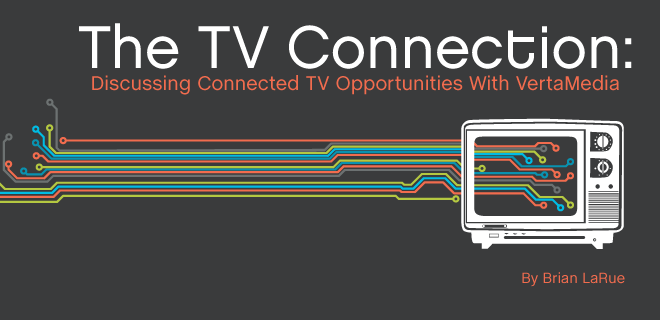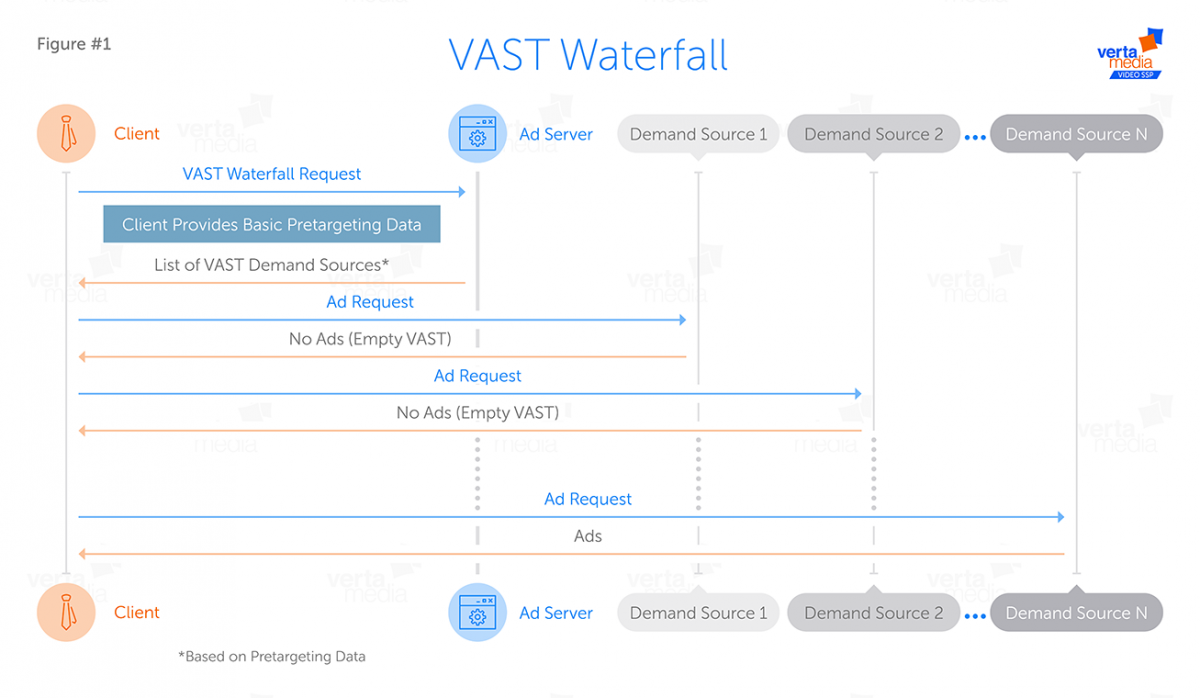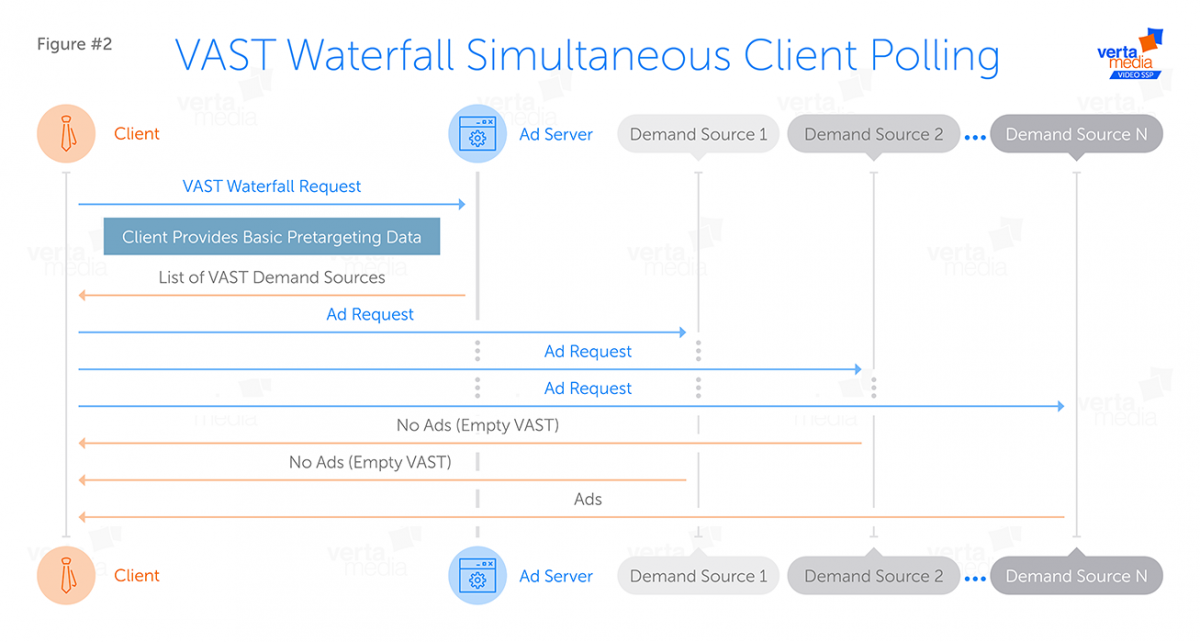
Despite the wonders of screen proliferation, everyone—advertisers and publishers alike—wants to be on the TV screen. It’s big and captivating—the TV screen sucks people in and demands their attention in a way that no desktop or mobile device can.
The rise of Connected TV (CTV) and over-the-top (OTT) devices are fulfilling digital publisher dreams of reaching the promised land of the TV screen. But getting your content up on the tube is no cakewalk, and of course monetizing it leads to a whole other host of challenges.
However, the programmatic space offers some intriguing propositions for publishers venturing into the Wild West of Connected TV. We chatted up Alex Bornyakov, CEO and Cofounder of programmatic video specialist VertaMedia, about the many moving facets in the CTV space, including the lack of standards around delivery and measurement, the ups and downs of server-side stitching, and benefits of both open and private marketplaces.
BRIAN LARUE: What are the barriers to entry into Connected TV for digital publishers/video providers?
ALEX BORNYAKOV: Before a publisher or video content provider can capitalize on CTV and OTT opportunities and overcome any barriers to entry, they need to do some deep soul searching. The questions to address are many depending on each company’s situation, size, knowledge, and present business plan, but they really boil down to these basic five:
- What is the publisher’s ultimate goal—content distribution, monetization or both?
- How should publishers monetize their content—via subscription model or advertising?
- Is the content valuable enough to create traction and attract viewers, and if so, what is the value of that audience?
- Which of the various platforms should they align with and why?
- How do you maximize your return and overall distribution via OTT devices while also leveraging Facebook and YouTube, as well as desktop and mobile audiences?
As the market is just beginning to mature, there are few tech standards across the various delivery platforms and business models. However, OTT device providers are starting to offer digital ad serving support and adopt hybrid ad-supported monetization strategies, while still maintaining the subscription models that are the cornerstone of their business.
These providers face many issues such as the tech challenges of delivering video ads accurately; no deep knowledge of common market optimization tools like dynamic waterfalls and yield optimization solutions; a lack of tools for cutting latency and improving the overall user experience; and so forth.
You can’t just plug and play CTV publishers into the programmatic world easily without the right ad delivery platform partners. At VertaMedia, we try to educate our partners on the various technical aspects they need to consider and incorporate our ad serving technology into a variety of devices and software.
BL: Once a publisher is onboard with CTV, what are the challenges in getting advertiser demand?
AB: The reason the demand side is interested in expanding onto CTV is the new and huge audience they can access. However, the same KPIs and metrics used to measure the effectiveness of video ad campaigns on desktop and mobile may not transfer precisely to the CTV ecosystem.
As mentioned previously, there are diverse analytics systems and no clear standards, which consequently affect a clear approach to effectively measuring advertising campaigns. For instance, some OTT providers collect only basic data like IP, while others—Apple TV, Netflix, and Hulu to name a few—have way more detailed consumer profiles. But these providers own their ecosystems and are not eager or willing to open their doors to new sources of demand.
The supply side in these cases needs to incorporate the right value proposition to advertisers, agencies, and trading desks to prove that their “captive” audience is valuable and worth the higher CPMs demanded for the limited inventory available in the marketplace.
VertaMedia is a strong supporter of ad stitching and its ability to work around ad blockers with reduced latency and bandwidth usage. We will soon deploy this technology as part of our SSP, but we recognize that ad-stitching technology further complicates matters.
Letting publishers stitch their video and ad content together seamlessly through the CMS rather than the browser requires a higher level of transparency and trust between the supply and demand sides. All of the data will be proxied over the stitching provider, and is not available for the demand side in a direct way. In effect, safety is a high priority as fraud detection, viewability, and conversion tracking infrastructures are in an embryonic state.
BL: How effective is audience targeting in CTV? What are the challenges in utilizing targeting data effectively?
AB: The CTV ecosystem itself brings a lot of unique and new information about users because the content is highly categorized. Cross-targeting could further facilitate effective deals by bringing video ad conversions to the market.
Unlike buying traditional TV linear audiences, advertising via CTV is perfectly suited for both branding and direct-response campaigns. But because of the lack of standards for accurate user aggregation and not enough active DMP integrations in the infrastructure, advertisers are not yet getting all the benefits of CTV video advertising nor taking full advantage of the opportunity.
BL: In working with multiple demand sources in video, how can publishers help limit issues around latency or serving the right creative in the right media environment?
AB: As long as VAST is the major protocol across the CTV ecosystem, there shouldn’t be any issues if the publisher’s ad-serving partner allows them to make server-side calls to multiple demand sources.
Let’s explain that in a few diagrams:
Pros:
- Low server-side expenses.
Cons:
- Difficult to implement this approach with the majority of OTT providers.
- High latency for the end user.
Pros:
- Low server-side expenses.
Cons:
- Difficult to implement this approach with majority of OTT providers
- Medium latency for end user as user’s Internet channel is already busy with content translation and there are restrictions on the number of parallel client-side requests. Exact limitations vary by platform.
- Might cause content delivery issues.
Pros:
- Swift ad delivery, possibly even faster based on ad-delivery model (full auction, first look, etc.).
- Easy to implement and manage—with one VAST tag, you manage everything from the SSP side.
Cons:
- Increased server-side expenses.
- Increased server complexity (it’s not the supply side’s problem, though).
BL: What still needs to be done to fulfill VAST 4.0’s promise on the buy side and the sell side?
AB: VAST 4.0 has a lot of interesting and needed features, and it’s a great solution for publishers and advertisers. Advances include no more nested waterfalls in the market; faster loading across all players; and support for viewability and other performance tracking tools for advertisers. However, the adoption from VAST 2.0 or VPAID to VAST 3.0. and now 4.0 has been slow on both the demand and supply sides. Look how long it has taken to move off Flash-based creatives.
All new technology adoptions are driven by two factors—money and user experience. Supply-side adoption to new standards are typically driven by the demand side. VAST 4.0 may take several more years to become the de-facto standard even with all its capabilities and advantages.
BL: Where do third-party measurement companies stand in the connected TV space?
AB: Their role is as important as it is in the rest of the ad tech and digital ecosystem. The demand side needs to measure traffic quality and performance, and be sure that their video ads are delivered to the target audience.
But at the moment there are no measurement standards on the tech side and little agreement on what data is recognized as efficient or accurate. Due to huge technology differences among smart TV vendors, third-party measurement is needed to verify data reported by the publisher side. This is a tough problem to solve from the technology perspective, but it must be for the industry to succeed and flourish.
BL: How effective are private marketplaces versus the open marketplace in connected TV?
AB: Open marketplaces and programmatic buyers are not as familiar with the CTV environment as they are with desktop and mobile. Despite the fact huge companies like Roku, Amazon and Apple are highly involved and evolved already, the CTV ecosystem remains a “walled garden” to many companies seeking to get on board.
Private marketplaces or direct deals are the most common way of transacting between publishers, agencies and supply side platforms at the moment—not dissimilar to the desktop and mobile video spaces of four or five years ago. This will change over the coming year or two, but not without the growing pains all new industries and digital advertising environments go through.
Publishers need to address and give the same attention to their core business as they always have—producing engaging content, providing great user experience, and generate revenue and profits or disappear. The landscape will evolve and at some point be driven by hybrid ad and subscription business models with the mature technology to support it.


